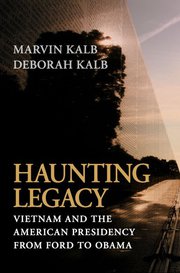Q&A with National Geographic's Catherine Karnow
 Friday, October 19, 2012 at 11:48AM
Friday, October 19, 2012 at 11:48AM Catherine Karnow with General Giap, 1994 Photograph by ©Catherine KarnowCatherine Karnow, a photographer for National Geographic, has been traveling to Vietnam since 1990. She was the only Western journalist to accompany General Vo Nguyen Giap to Dien Bien Phu in 1994. Among her projects in Vietnam is her documentation of the impact of Agent Orange on Vietnamese families.
Q: What is the legacy of Agent Orange in Vietnam, and how have you attempted to document that legacy?
A: Between 1962 and 1971, the U.S. military sprayed 12 million gallons of Agent Orange over various parts of Vietnam. At the time, we didn’t think it was harmful; it was to destroy foliage so [U.S. troops] could see the enemy, the Vietcong, better. Of course we know now that it was highly toxic. And the most shocking fact is that diseases from Agent Orange are passed down from generation to generation. It’s now in the third generation, the grandchildren, in Vietnam and in the United States. The diseases are consistent.
The current problems with Agent Orange can be divided in two categories. First there is the contamination, and finally the cleanup of the soil and water. Dioxin is still traceable in what are known as "hot spots," areas around what were our military bases, where containers of Agent Orange leaked into the ground; and where the planes took off carrying gallons of the chemical. In August of this year, 2012, the big news is that the U.S. government announced $43 million for cleanup of [toxins] around the Danang military base. However, that is not a lot of money and it doesn’t get at the real problem. In reality, not that many people are affected. Dioxin only presents itself in the fatty tissues of fish and ducks in a very small area in Danang.
The real issue is this horrifying fact that diseases are passed down genetically. The U.S. and Vietnamese governments do acknowledge this. And the U.S. government does compensate veterans and their families to some extent. They do not compensate Vietnamese families. It is estimated that in Vietnam today 150,000 children are affected with diseases associated with Agent Orange, diseases such as mild to acute mental impairment, respiratory problems, and many severe physical handicaps.
I have been documenting Agent Orange children since 1990, as part of my larger Vietnam work. In July 2010 I went to Danang to document the lives of two families. I wanted to show the difference in one family that gets support and another who get very little support. To show that even a small amount of support goes a very long way. The family who is served receives extraordinary care from a very special small American NGO called Children of Vietnam. They know where every donated dollar goes, and it goes to help the specific needs of that child or that family.
The story of Agent Orange children has been well documented. However, what we usually see are horribly shocking images of deformed children. I don’t think this is right, fair or ultimately effective. I want to show how families are affected, to tell stories. As an American I feel a strong sense of responsibility to do something. These families need support; nobody’s listening to them or seems to care. Nobody wants to talk about it. It’s very different from in our country, where there are support groups.
Q: When did you first go to Vietnam, and what changes have you seen over the years as a photographer?
A: I first went in July 1990. At that time, the country was just opening up to the rest of the world. It was quiet, very poor, very austere. But you felt a sense of eagerness on the part of the Vietnamese to open the country to the world. In 20 years, I have been a dozen times. Today, Saigon is an Asian city out of control. During the mid to late 1990s, the talk in Saigon was all about controlling the increasing traffic problems, and unplanned development.
But nothing was actually done about it, so now it’s sheer madness. The roads are a mess of bicycles, motorcycles, cars, buses, the odd vendor trying to get his pushcart through, and tourists standing on the curb looking terrified to cross the street.
Certainly, the sense of hopefulness and innocence is gone. There is government corruption, and a terrible bubble economy. The very rich people are getting much richer, and the people at the bottom are really suffering. It’s creating a country of desperate people. The government has an insane [need] to hold onto power, which is in the hands of a few top people. It is a corrupt oligarchy. There is nothing communist about Vietnam.
Q: What’s next for Vietnam?
A: I have no idea. I don’t think there will be an overthrow of the government.
Q: Given that your father, Stanley Karnow, is probably the best chronicler of the Vietnam War, do you think an interest in that country is a family trait?
A: It’s not that so much. When I was growing up in Hong Kong, the Vietnam War felt scary and close by. I grew up with a sense of fear that turned into curiosity. My whole life I heard about Saigon and Hanoi. As an adult, a photographer, it was top on my list of places to go. Then my father’s book (Vietnam: a History) came out. It was the first look back at the Vietnam War. Previously, people hadn’t wanted to think about Vietnam. As a young adult the success of that book, and of the TV series, was a big part of my life.
In 1990, a confluence of things happened that became the impetus for my going. In March, my father, along with my mother, went to Vietnam to interview General Giap for The New York Times Magazine. I was just starting a career as a photographer, but didn't consider shooting the story. When they returned my mother said I should have been the photographer; that planted a seed in my head the idea I should go to Vietnam. I had been looking for a project to shoot.
In May I was in Sydney doing a project on Asians in Sydney, and [met a man from Vietnam]. He said he would be returning to Vietnam for the first time since he had escaped, in two months, and asked, “Would you like to be there with me?” I knew this was my opportunity. The three things came together. And the fourth thing: because my father had just been there, I would have great access if I went right away. Vietnam got under my skin.
Twenty years later, those are still my favorite photographs [from that first visit]. I have a special feeling for Vietnam and the people. The character of the Vietnamese people—I connect to them, I relate to them. The Vietnamese people are very family-oriented. They have a word—buun—seeing beauty in sorrow. I find that incredibly beautiful. They are very tenacious. They love photographers. How can you not love these people? They are very forgiving. I feel more at home in Vietnam than I do in many parts of this country.
Q: Are you planning any other photography projects relating to Vietnam or its history?
A: I give presentations on Vietnam for National Geographic; my next presentation is in March in Toronto. The first series of lectures were in Seattle this year, to 10,000 people total. It’s an ongoing presentation. I’m always thinking about my next trip to Vietnam. No matter how much material I have, my body of work doesn’t seem complete or up-to-date. The country changes so fast. There are many places I have never photographed.
Q: Anything else we should know?
A: My photographs are documentary, but really, my work is deeply personal. Most of my trips there are not paid for by a client. When I am in Vietnam, I don’t sleep, there is so much to shoot, so many people to talk to, so much to cover. I exhaust myself with my own relentless fascination with the country. It is intoxicating.
Interview with Deborah Kalb, co-author of Haunting Legacy.


Reader Comments (1)
I have had now 3 instances when objects on a necklace chain have come off with no apparent reason.
1st a new era car key came flying off of my necklace where I keep it not to lose it. The key had no damage and the chain was intact and not opened. The second, being an official at a swimming pool I had a whistle attached to my necklace chain and it suddenly fell off with no opening of the chain fastener. The ringlet on the whistle was also intact.
#3. My plastic pool ID came off of my necklace chain with no opening of the chain or any damage or rip in the ID badge. Why do these objects leave the chain when the chain has not opened and the objects that fall from the chain, are 100% intact.
I need some help.